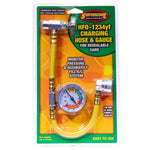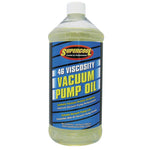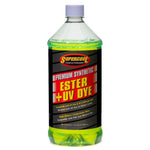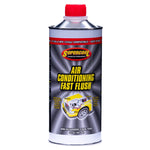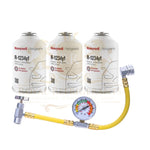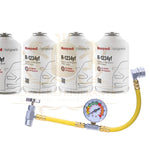You have no items in your shopping cart.
Everything You Need to Know About R-22 Freon for Sale for HVAC and Automotive Applications
If you’ve been searching for R-22 Freon for sale, you’re not alone. For decades, R-22 — often called Freon-22 — was the most widely used refrigerant in HVAC systems and automotive air conditioners.
However, due to its environmental impact, R-22 production has been phased out worldwide, making it increasingly difficult (and expensive) to find.
In this article, we’ll cover everything you need to know about R-22 Freon, including what it is, why it was banned, where it’s still used, and what alternatives are available for HVAC and automotive applications.
What Is R-22 Freon?
R-22, also known as HCFC-22 (Chlorodifluoromethane), is a hydrochlorofluorocarbon (HCFC) refrigerant that was once the industry standard for cooling and refrigeration systems.
R-22 became popular because it offered:
-
Excellent cooling performance
-
Compatibility with most HVAC and A/C systems
-
Low toxicity and easy handling
It was widely marketed under the Freon brand name by DuPont (now Chemours), which is why many people still call it “Freon gas.”
Where R-22 Freon Was Used
R-22 was used for over 40 years in:
-
Residential and commercial air conditioners
-
Refrigeration units and freezers
-
Heat pumps
-
Automotive air conditioning systems (in older vehicles)
-
Industrial cooling systems
If your home or car’s A/C system was built before 2010, there’s a good chance it still runs on R-22 Freon.
Why R-22 Freon Was Phased Out
Although R-22 was efficient, it contained chlorine, which contributes to ozone layer depletion when released into the atmosphere.
To protect the environment, the Montreal Protocol — a global environmental treaty — mandated the gradual phase-out of ozone-depleting substances like R-22.
-
2010: R-22 banned in new HVAC and A/C systems.
-
2020: Production and import of new R-22 refrigerant banned in most countries, including the U.S. and EU.
Today, only recycled, reclaimed, or stockpiled R-22 can legally be sold and used for maintenance of older systems.

Can You Still Buy R-22 Freon?
✅ Yes — but with restrictions.
R-22 Freon is no longer manufactured, so it is only available as:
-
Reclaimed or recycled refrigerant (recovered from old systems, cleaned, and certified)
-
Stockpiled cylinders produced before the ban
You can still find R-22 Freon for sale from certified HVAC suppliers or wholesalers, but prices have increased dramatically due to limited supply.
⚠️ Important: Only EPA-certified technicians (in the U.S.) or equivalent licensed professionals in other countries are legally allowed to purchase and handle R-22.
Typical Price Range of R-22 Freon (as of recent years)
Prices vary based on market conditions, location, and purity.
| Form | Approximate Price (USD) | Notes |
|---|---|---|
| 10 lb cylinder | $400–$800 | Limited availability |
| 25 lb cylinder | $900–$1800 | For commercial use |
| Reclaimed R-22 | 15–30% cheaper | Must meet AHRI-700 purity standards |
💡 Prices fluctuate because supply is shrinking — making R-22 a high-demand, low-availability product.
R-22 in HVAC Systems
R-22 was the standard refrigerant in most HVAC systems built before 2010. These systems can continue to operate if:
-
They are in good mechanical condition
-
They are serviced with recycled/reclaimed R-22
-
The refrigerant is not leaking excessively
However, due to the high cost and scarcity of R-22, retrofitting to a modern refrigerant (like R-407C or R-422B) is often more economical in the long run.
R-22 in Automotive Applications
R-22 Freon was occasionally used in older vehicle air conditioning systems, particularly in specialized or heavy-duty equipment.
However:
-
Most automotive A/C systems used R-12 originally.
-
Modern vehicles now use R-134a or R-1234yf, which are more efficient and environmentally friendly.
R-22 is not recommended for modern automotive systems because it operates under different pressures and requires mineral oil lubrication, which is incompatible with newer refrigerants.
R-22 Alternatives and Replacements
When an HVAC or A/C system still relies on R-22, there are two main paths:
1. Retrofit with a Drop-In Replacement
Some refrigerants can be used as direct replacements for R-22 with minimal modification. Common examples include:
| Replacement | Type | Notes |
|---|---|---|
| R-407C | HFC blend | Closest match to R-22, widely used in HVAC |
| R-422B | HFC blend | Suitable for direct replacement with minimal changes |
| R-421A | HFC blend | Energy-efficient, good for retrofits |
| R-438A (MO99) | HFC blend | Works with mineral oil systems |
2. Replace the Entire System
If your A/C or HVAC unit is over 15 years old, replacing it with a new R-410A or R-32 system can:
-
Improve energy efficiency
-
Reduce repair costs
-
Eliminate the need for hard-to-find refrigerants
Environmental and Legal Considerations
-
Do not vent R-22 into the atmosphere. It is illegal and environmentally harmful.
-
Always recover and recycle R-22 using certified equipment.
-
Only licensed technicians can purchase or handle R-22 legally.
-
Reclaimed R-22 must meet AHRI-700 purity standards before resale.
Failure to comply with refrigerant handling laws can result in heavy fines and penalties.
Safety and Handling Tips
-
Store cylinders upright in a cool, dry place.
-
Avoid open flames — R-22 decomposes into toxic gases when burned.
-
Wear gloves and safety goggles during handling.
-
Use only certified recovery and charging equipment.
-
Label all refrigerant containers clearly.
The Future Beyond R-22
As the world transitions toward low-GWP refrigerants, R-22 will continue to fade from use. Future systems will rely on eco-friendly options like:
-
R-32 (for high efficiency)
-
R-454B (mildly flammable but very low GWP)
-
R-290 (Propane) and CO₂ (R-744) for natural cooling solutions
These modern refrigerants deliver better performance, lower environmental impact, and long-term compliance with global standards.
Conclusion
R-22 Freon was once the backbone of the HVAC and refrigeration industry, but its environmental impact led to its phase-out. While R-22 Freon for sale still exists in limited supply, it is expensive and regulated.
If you own an older system using R-22, your best options are:
-
Continue using reclaimed R-22 (if available)
-
Retrofit with an approved R-22 replacement refrigerant
-
Upgrade to a modern, eco-friendly A/C system
By understanding your options, you can make an informed, cost-effective, and environmentally responsible decision for your cooling needs.
 English
English

